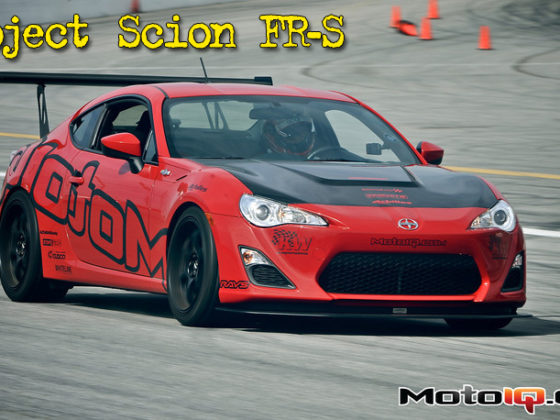
MotoIQ Wrench Tip – How to Gap Piston Rings
Setting the gap on your piston rings is an important step to building an engine that performs at its best. Getting your piston rings to have the optimal seal is perhaps the most critical aspect of good engine building. Of course you want to spend time assuring that your machine work and cylinder wall finish is correct for the type of rings used but a lot of people neglect blueprinting the ring gap.
You can usually buy rings in two ways, off the shelf pre-gapped or slightly oversized rings that you have to gap yourself. Off the shelf pre-gapped rings typically have a conservatively large ring end gap in order to prevent the rings from expanding with heat and having the ends butt together. If this happens the rings will start to dig into the cylinder walls leading to scuffing and in severe cases breakage with severe damage to the cylinder walls and pistons.
The trouble with large ring end gaps is that a lot of combustion pressure can leak past the gap reducing your compression and power. So most professional engine builders get slightly oversized rings and hand set the gaps at their optimal gap width. This width is the one recommended by the piston manufacturer.
Oversized file to fit rings typically have a gap that is 0.005 to 0.015″ too small and you have to set your end gaps yourself. This is the preferable way to go when building your own engine.
Typically the top compression ring has a sightly larger gap than the second ring because it sees more heat. Forced induction and nitrous motors usually run slightly wider gaps as well. Different engine builders may also have their own favorite gaps and theories that they like to set their engines up with.
Gapping piston rings is pretty easy but we thought we would show you how it's done just in case you haven't done it before. It is a good extra step to take when building an engine just so you can be assured that you get every bit out of it and have a long service life.
 Here are typical performance rings from JE Pistons. The top compression ring is a narrow low tension chrome faced ring, the second compression ring is a ductile iron Napier profile ring. The Napier ring has a tapered profile that helps scrape oil off the cylinder walls. The oil ring is a narrow railed scraper. Modern rings are thin and low tension so having the proper ring gap is all the more important. The rings have been WPC treated for less friction and longer life. Reducing ring friction is important because the rings account for about 50% of the total mechanical friction in an engine.
Here are typical performance rings from JE Pistons. The top compression ring is a narrow low tension chrome faced ring, the second compression ring is a ductile iron Napier profile ring. The Napier ring has a tapered profile that helps scrape oil off the cylinder walls. The oil ring is a narrow railed scraper. Modern rings are thin and low tension so having the proper ring gap is all the more important. The rings have been WPC treated for less friction and longer life. Reducing ring friction is important because the rings account for about 50% of the total mechanical friction in an engine. Our engine is a Dart all alloy small block Chevy. It has had the block machined and honed with torque plates with a smooth plateau honed 600 grit finish. After honing the bore has been WPC treated. This sort of attention to detail is typical of a race type engine. Since your engine's performance, long term wear and oil consumption all depend on the rings, piston to bore clearance and cylinder wall finish and concentricity, attention to detail here is very critical.
Our engine is a Dart all alloy small block Chevy. It has had the block machined and honed with torque plates with a smooth plateau honed 600 grit finish. After honing the bore has been WPC treated. This sort of attention to detail is typical of a race type engine. Since your engine's performance, long term wear and oil consumption all depend on the rings, piston to bore clearance and cylinder wall finish and concentricity, attention to detail here is very critical. We are building a turbo engine and our piston of choice is this JE dished full skirted low silicon alloy forging which equates to 10:1 compression on our particular motor. The cylinder to wall clearance has been honed to 0.007″ plus or minus a couple of tenths. This is very high quality machine work. The JE piston has been deburred and WPC treated.
We are building a turbo engine and our piston of choice is this JE dished full skirted low silicon alloy forging which equates to 10:1 compression on our particular motor. The cylinder to wall clearance has been honed to 0.007″ plus or minus a couple of tenths. This is very high quality machine work. The JE piston has been deburred and WPC treated. Howard Watanabe first gets the ring in position to measure the end gap properly. After placing the ring in the bore, Howard uses a piston to push the ring down a little and get it fully squared in the bore. This is a very important step to ensuring an accurate end gap measurement.
Howard Watanabe first gets the ring in position to measure the end gap properly. After placing the ring in the bore, Howard uses a piston to push the ring down a little and get it fully squared in the bore. This is a very important step to ensuring an accurate end gap measurement.



